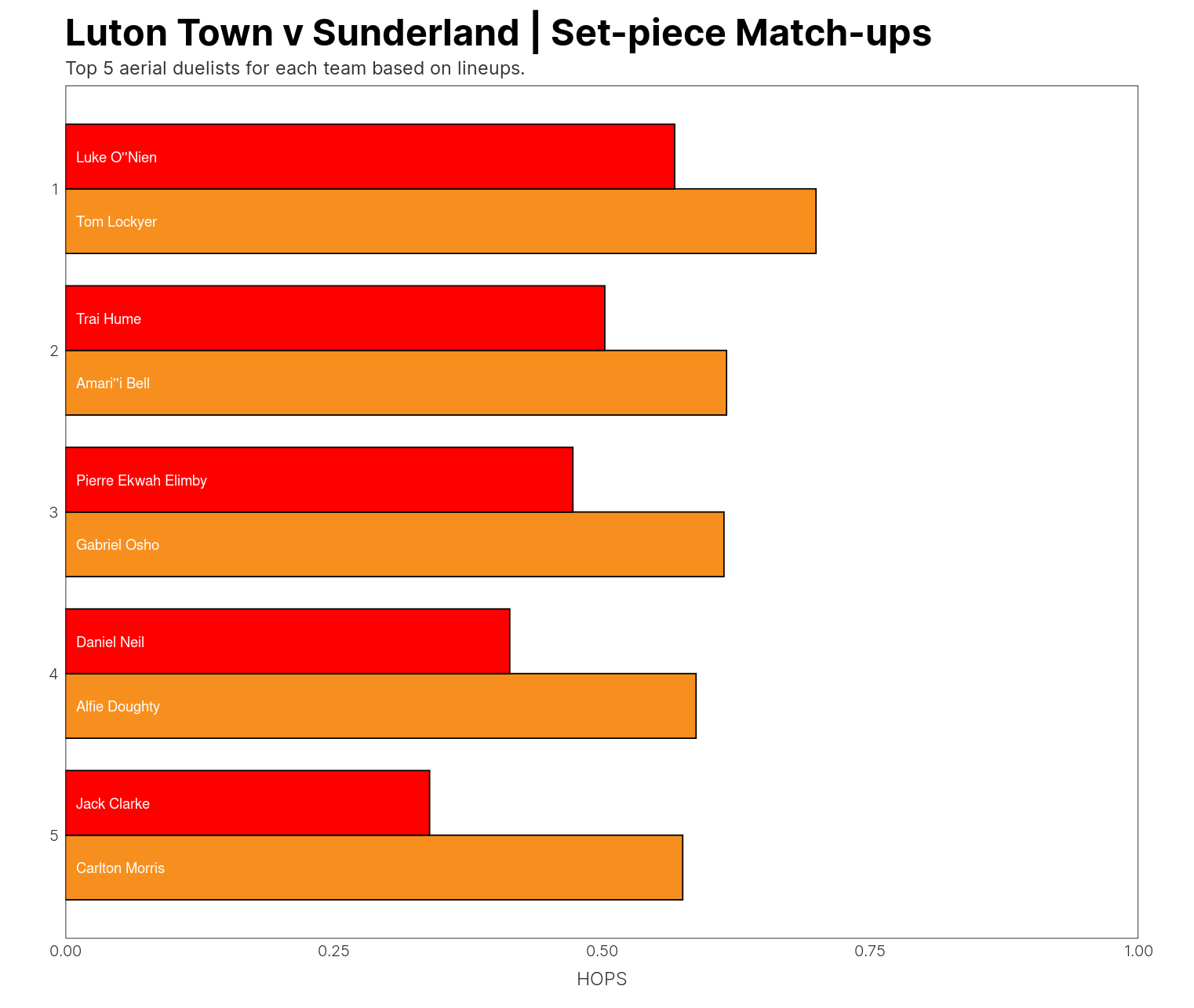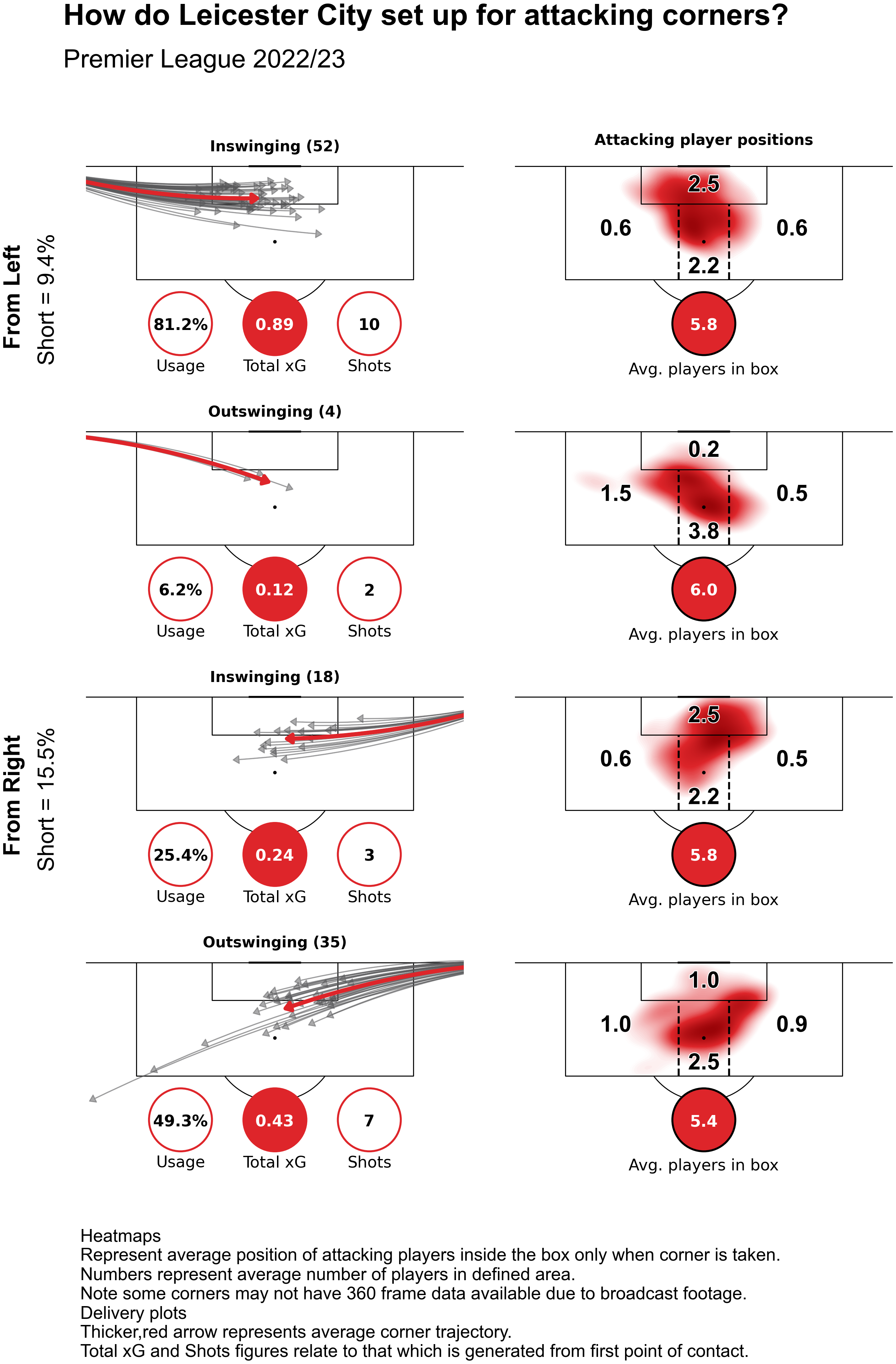HOPS, our new way of measuring aerial ability, is a great tool for set-piece analysis and strategy and can be used both offensively and defensively by set piece coaches. Every game the set piece coach has to decide which players he wants in which positions for attacking and defending set pieces.
Most coaches will have a very good grasp of the aerial ability of their own players. But having a good grasp of the current aerial ability of every player in the league is a lot more challenging. This makes tasks such as assigning man markers a difficult process for coaches. In my personal experience, coaches will usually rely on historical knowledge they have of players - maybe it's a centre-back that’s been in the league for years and then it's easy - but this is not always the case. Even when they’ve known the player for a long time it can still be hard to recognise a drop-off in their ability or even an improvement if the coach has anchored themselves to how they’ve rated them previously.
When it's a player they’ve not seen before, they can supplement their knowledge by watching a player's recent footage - mainly from set pieces - but this is time-consuming and has its own pitfalls. What if you watched a game where the player happened to head the ball unusually well? Sometimes a coach will also ask the opinion of his own players who have duelled the opposition players before.
StatsBomb’s HOPS metric gives us an indication of a player's current aerial ability based on every duel they’ve recorded in our dataset, making it very useful for set piece coaches. One of its main strengths is that it can pick up on when players improve and also when they drop off near the end of their careers.
Some players will get better and better:

Some players don’t get much better or worse:

And some players go downhill:

Players develop at different rates and keeping track of this as a set piece coach using your eyes alone is near impossible. HOPS isn’t perfect, it only measures a player's ability to win the aerial duel and doesn’t take into account heading accuracy, but at the very least it provides an excellent sense check for coaches.
On the defensive end, most teams will set up in a hybrid scheme between zone and man marking in which case HOPS can be used to decide which players you want in which zones and who you want on each attacker. On the offensive side, you can see which mismatches you might want to create between which players to give you the biggest chance of success.
Case Study: Manchester City vs RB Leipzig
Manchester City are absolutely stacked with aerial prowess, this is especially true since the arrival of Erling Haaland and the inclusion of four centre-backs in the starting lineup. Here’s an indication of the aerial talent each team in the Premier League had at their disposal for the season just gone. The highlighted players are the team's four best aerial duellists that started together most often last season, and the teams are ordered from best-to-worst on the average HOPS score of those four players:

City put this aerial advantage into full effect against Leipzig in their 7-0 win in the Champions League last season, scoring three goals from set pieces and creating 2.04 xG from them - one of the highest values recorded in our database. What does HOPS say?

Leipzig were on the wrong side of every aerial matchup against City so it's not that surprising City were able to create so much from set pieces in the game. For the first goal, Rodri beats Henrichs in the air from a corner which results in a penalty. The first corner goal comes from Dias beating Gvardiol in the air. For the second, Haaland beats both Laimer and a late arriving Orban. Haaland beating Orban was the only unlikely outcome from those aerial duels and that only happened because Orban was rushing over trying to help Laimer who stood no chance.

Sure City ran some nice routines to increase their chances but you really don’t have to complicate things too much when you’re favoured to win an aerial duel from almost every plausible combination of match-ups.
Case Study: Luton vs Sunderland
Sunderland had a tough time of it from set pieces against Luton in the Championship Playoffs last season. Sunderland had a centre-back injury crisis going into the playoff semi-finals resulting in a large aerial talent deficit, which Luton took advantage of.

Luton scored three goals across the two legs - all from set pieces. They get their big guys into the box, frame the goal well and bank on winning the first contact, after which they have a good structure for poking the 2nd ball home which paid off as none of the three goals were scored with the first contact. Rather fittingly, Luton’s first corner goal was aimed at Carlton Morris who was being marked by - you guessed it - Jack Clarke. It’s no surprise that Morris won the header with HOPS predicting him to win that duel 78% of the time.

Combining HOPS with advanced 360 data
HOPS becomes particularly powerful for set piece coaches when used with StatsBomb’s 360 and event data. Want to put your best aerial duellist on the player the opposition aim their corners at the most? You can check the event data for that. Want to put your best duellists in zones where the ball is likely to be delivered to? You can check the corner touch maps. Here’s Leicester’s from last season - from the right side nearly everything goes to the near post or the top of the six-yard box - that’s where you want your best aerial duellists!

Set pieces are an area of the game where using data and tools to support the analysis cycle can save precious time for analysts and coaches. Combining an ability-measure such as HOPS with contextual data such as where the upcoming opponent are weak at defending corners can immediately inform the set piece strategy and training ahead of the weekend.
If you'd like to know more about how HOPS and StatsBomb data can help you, you can contact us here.

